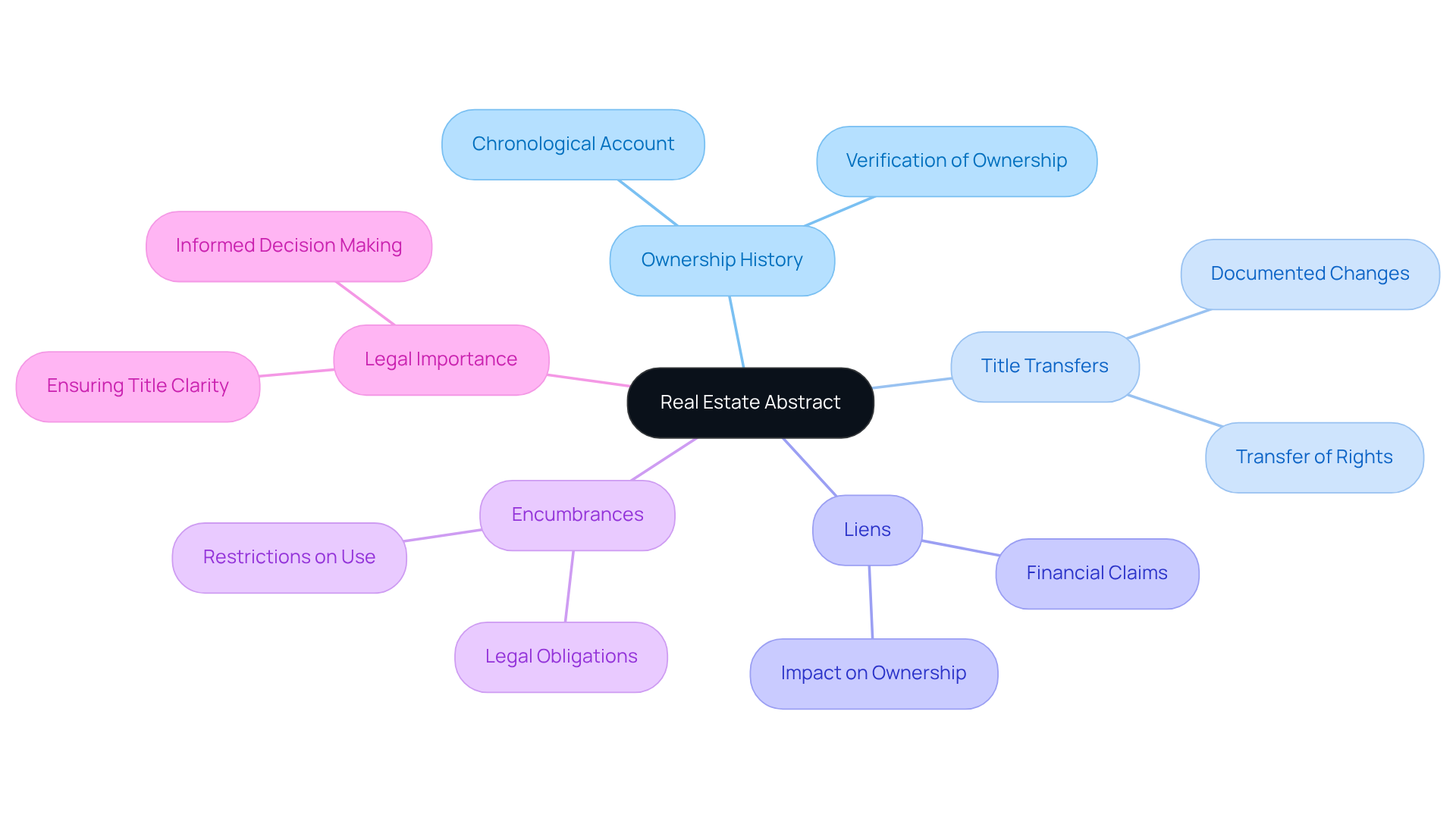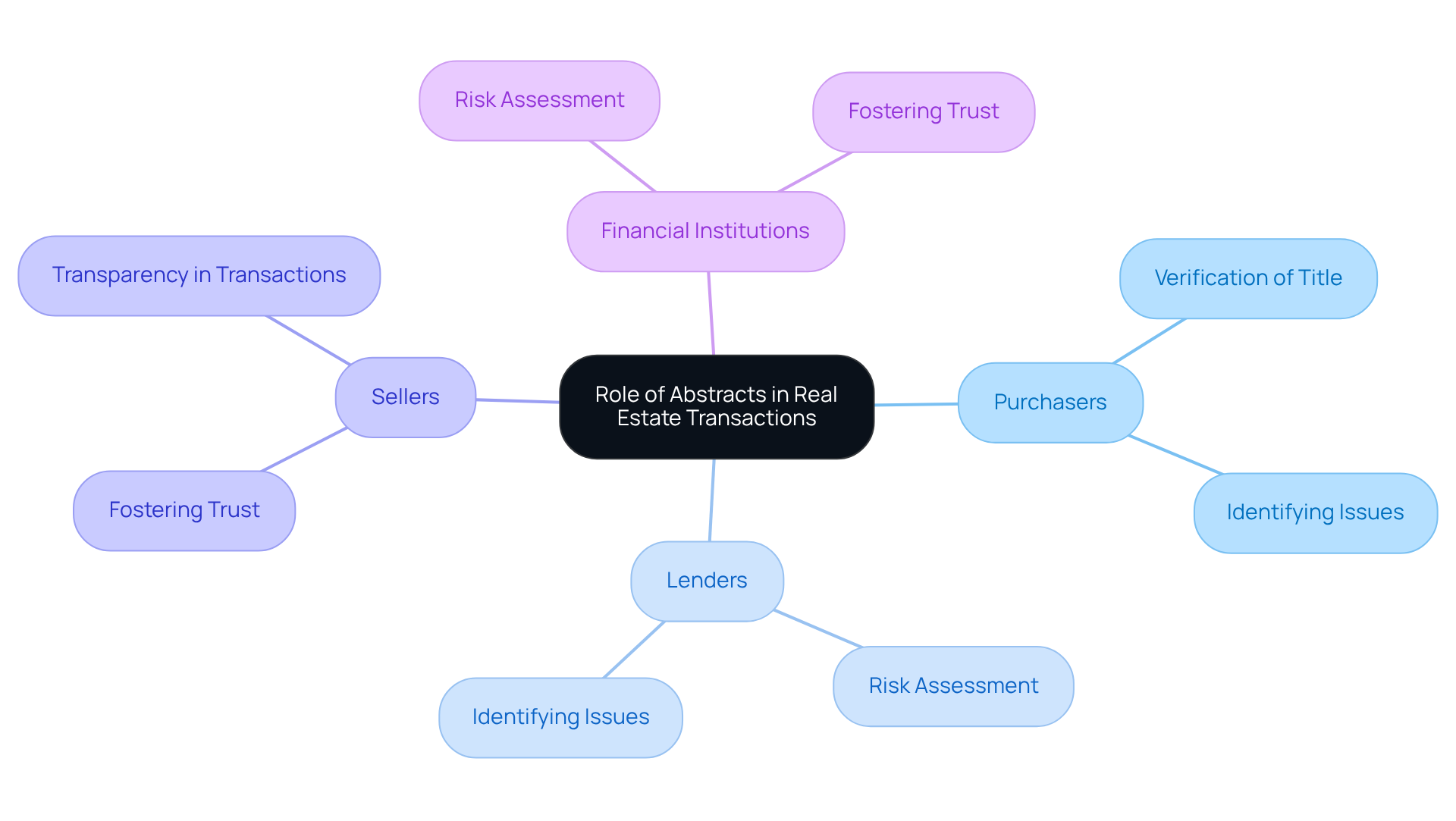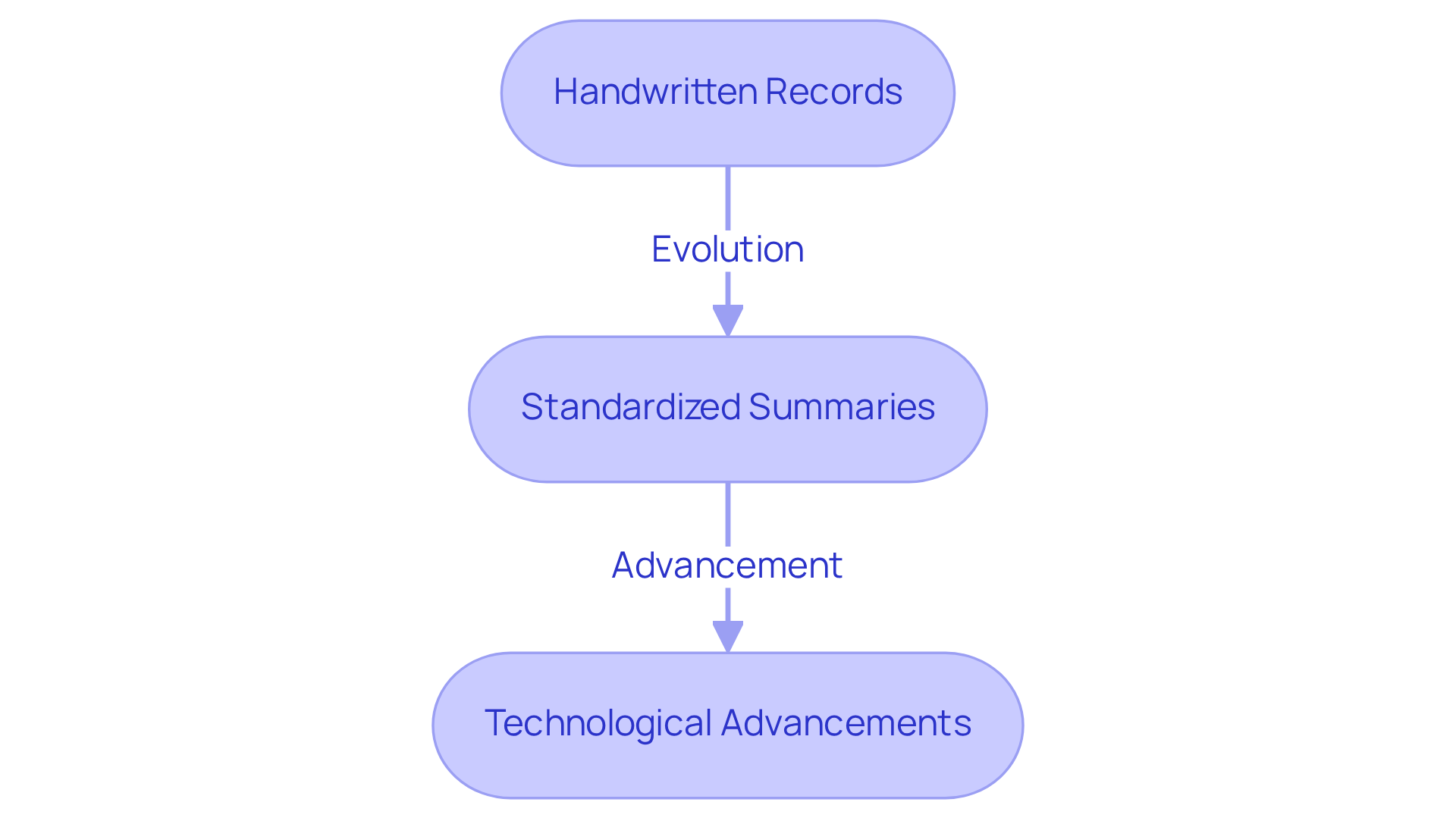Overview
A real estate abstract is an essential document that encapsulates the ownership history, legal descriptions, and any liens or encumbrances associated with a property. This document serves as a vital tool for verifying ownership and facilitating real estate transactions. By providing a comprehensive overview of these key components, the abstract empowers all parties involved—buyers, sellers, and lenders—to make informed decisions. It also aids in identifying potential legal issues, thereby fostering trust and efficiency in the transaction process.
Introduction
A real estate abstract is a vital document that encapsulates the ownership history of a property, detailing everything from title transfers to legal encumbrances. This comprehensive summary not only aids buyers and sellers in making informed decisions but also provides lenders with the necessary information to assess risks effectively. Furthermore, as the landscape of real estate transactions evolves, one must ponder: how has the role of real estate abstracts transformed over the years, and what implications does this hold for future property dealings?
Define Real Estate Abstract: Key Concepts and Importance
A property summary, often referred to as a title summary, serves as a crucial document that delineates the ownership history of a specific piece of real estate. This document encompasses a chronological account of all title transfers, liens, encumbrances, and other official actions that impact the asset. The importance of a summary lies in its role as an indispensable tool for verifying ownership and ensuring that the title is devoid of any legal complications. By providing a thorough overview of the asset's background, it empowers purchasers, vendors, and financiers to make informed decisions during real estate transactions.

Contextualize the Role of Abstracts in Real Estate Transactions
In real estate dealings, summaries serve as an essential tool for all parties involved. They provide a clear overview of the asset's ownership history, which is crucial for purchasers to verify the authenticity of the title. Lenders, in addition, rely on summaries to assess the risks associated with funding a real estate asset. By condensing all pertinent documents, summaries help identify potential issues such as unresolved liens or disputes regarding ownership, thereby reducing the likelihood of future claims. This transparency fosters trust among buyers, sellers, and financial institutions, ultimately facilitating smoother transactions.

Trace the Historical Development of Real Estate Abstracts
The practice of creating real estate summaries has a rich history that spans several centuries, evolving in tandem with the legal frameworks governing land ownership. Initially, these summaries were handwritten records detailing the history of property ownership, often compiled by attorneys during property transactions. As the complexity of these transactions increased, so did the demand for standardized and precise summaries. Today, the advent of technologies such as machine learning and optical character recognition has transformed the process of generating summaries. This advancement enables quicker and more accurate extraction of information from extensive title documents. Consequently, this evolution underscores a steadfast commitment to enhancing both efficiency and accuracy in the title research process.

Identify Key Components of a Real Estate Abstract
To comprehend property ownership, it is important to know what is a real estate abstract, which consists of several key components:
- Legal Description: This includes a precise description of the land, detailing its boundaries and location.
- Chain of Title: A chronological list of all previous owners, illustrating how ownership has transferred over time.
- Liens and Encumbrances: This section outlines any claims against the asset, such as mortgages, tax liens, or easements.
- Judicial Actions: Documentation of any judicial proceedings related to the asset, which may influence ownership rights.
- Certification: A statement from the abstractor certifying that the information is complete and accurate.
Collectively, these components provide a comprehensive overview of what is a real estate abstract, ensuring that all parties involved in a transaction have access to critical information necessary for making informed decisions.

Conclusion
A real estate abstract is a vital document that encapsulates the ownership history and legal standing of a property. By providing a detailed account of title transfers, liens, and judicial actions, it plays an essential role in enabling all parties involved in a transaction to verify ownership and understand any potential legal complications. This clarity is crucial for buyers, sellers, and lenders alike, as it fosters informed decision-making and facilitates smoother real estate transactions.
The article highlights several key components that constitute a real estate abstract, including:
- The legal description of the property
- The chain of title
- Any encumbrances or liens
Each of these elements contributes to a comprehensive understanding of a property's history, empowering stakeholders to address any issues before they escalate. Furthermore, the historical evolution of real estate abstracts demonstrates how advancements in technology have enhanced the accuracy and efficiency of these critical documents.
Ultimately, the significance of real estate abstracts extends beyond mere documentation; they are fundamental to the integrity of property transactions. By emphasizing the importance of thorough title research and transparency, stakeholders can mitigate risks and foster trust within the real estate market. Embracing the knowledge and tools surrounding real estate abstracts is essential for anyone involved in property transactions, ensuring that they navigate the complexities of ownership with confidence and clarity.
Frequently Asked Questions
What is a real estate abstract?
A real estate abstract, also known as a title summary, is a document that outlines the ownership history of a specific property, detailing all title transfers, liens, encumbrances, and official actions affecting the asset.
Why is a real estate abstract important?
A real estate abstract is important because it serves as a vital tool for verifying ownership and ensuring that the title is free of legal complications, enabling informed decision-making for purchasers, vendors, and financiers in real estate transactions.
What information does a real estate abstract include?
A real estate abstract includes a chronological account of title transfers, liens, encumbrances, and other official actions that impact the property.
Who benefits from a real estate abstract?
Purchasers, vendors, and financiers benefit from a real estate abstract as it provides a comprehensive overview of the property's background necessary for making informed decisions.




